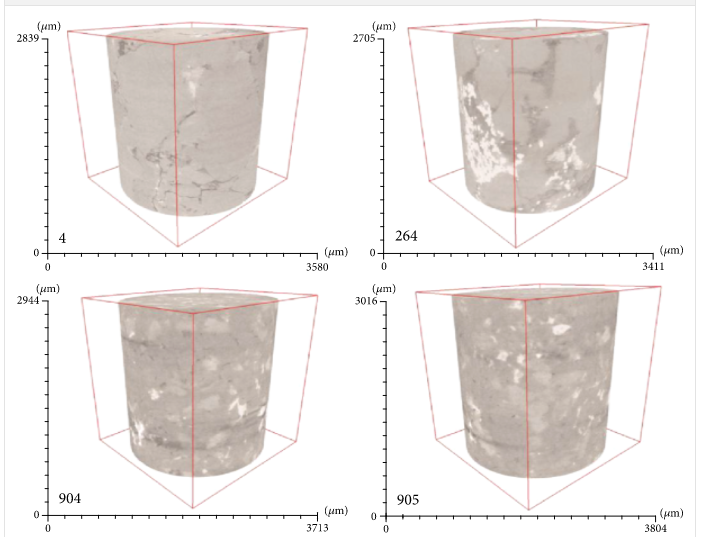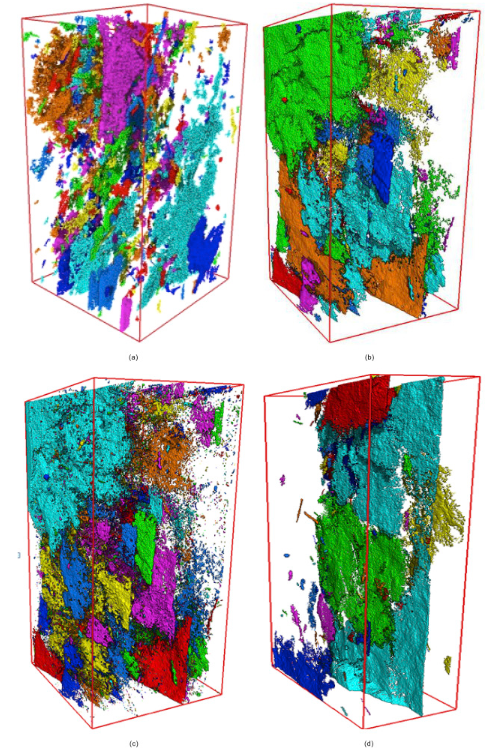Welcome to the PerGeos Use Case Gallery
Below you will find a collection of use cases using PerGeos Software. Based on the technology of its predecessor Avizo Software, PerGeos is a robust software platform for visualizing, processing, and analyzing 2D and 3D digital rock image data.
These use cases include scientific publications, articles, papers, posters, presentations or even videos that show how PerGeos is used to address various scientific and industrial research topics.

Technological advances and energy demands have made tight sandstone reservoirs worth to be exploited. Tight reservoirs are characterized by low porosity and permeability and strong heterogeneity, especially considering the extensive development of nanometer-scale pore throats or the wide-ranging PSD. Previous studies reveal that the PSD and pore-throat structure have a more direct effect on the storage and transport performance of tight sandstone reservoirs than porosity and permeability. Dif... Read more
Qiang Lei, Liehui Zhang, Hongming Tang, Yulong Zhao, Man Chen, and Chunyu Xie

Three-dimensional characterization of micro-fractures in shale reservoir rocks
Fractures are crucial for unconventional hydrocarbon exploitation, but it is difficult to accurately observe the 3D spatial distribution characteristics of fractures. Microtomography (micro-CT) technology makes it possible to observe the 3D structures of fractures at micro-scale. In this study, micron-CT scanning is conducted on multiple mud-shale samples of source rocks in the Permian Lucaogou Formation, Junggar Basin. The Avizo software is applied to process and segment the micron-CT images... Read more
Chao Qi, Xiaoqi Wang, Wei Wang, Jie Liu, Jincai Tuo, Keyu Liu